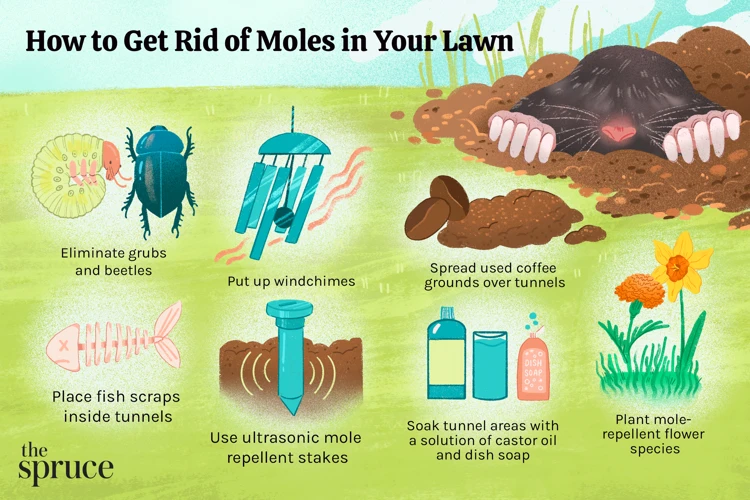Have you noticed peculiar bumps in your lawn, or tunnels that seem to appear out of nowhere? Do you find yourself wondering who the culprit could be? It’s likely that moles have made themselves at home beneath your property. These subterranean creatures are notorious for their ability to create unsightly mounds and raised ridges in your backyard, but to effectively control and prevent the damage caused by moles, it is important to understand their physical characteristics and behavior. In this article, we’ll take a closer look at these enigmatic creatures, exploring their habitats, diets, and reproductive habits. We’ll also examine the signs of mole activity and outline various methods for mole control.
Behavior and Habitat
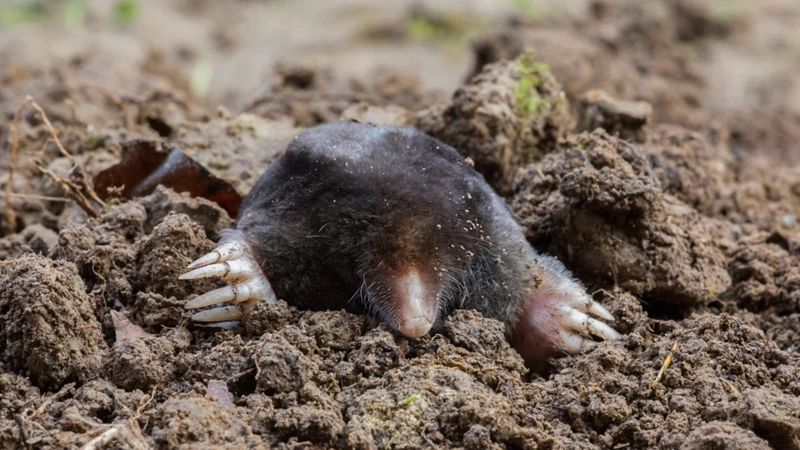
As an assistant in understanding moles, we need to explore their behavior and habitat. It may surprise you to learn that despite their infamous reputation for damaging lawns and gardens, they play an essential role in the ecosystem. Moles have several unique physical characteristics that enable them to thrive underground, from their strong forelimbs and claws which they use for digging to their internal anatomy, which allows them to regulate their body temperature. Let’s take a closer look at the behavioral patterns and habitat preferences of moles.
Behavior
Moles are small, subterranean mammals that live almost their entire lives underground. They are fascinating creatures with unique behaviors that have evolved to suit their underground lifestyle. Here are some of the **notable behaviors** of moles:
| Behavior | Description |
|---|---|
| Excavating | Moles are exceptional diggers that create an extensive network of tunnels and underground burrows. They do this using their strong forelimbs and sharp claws. The excavation process helps them to create underground nests and seek food. |
| Sniffing | Moles have an exceptional sense of smell that they use to find food in the soil. Their snouts are specialized for detecting prey, particularly earthworms, and smelling other moles in their territory. |
| Marking territory | These subterranean mammals maintain a vast network of underground burrows, which they use to reside, seek food, and travel. They mark their territory using urine and feces. Moles also use their scent to recognize other moles in their vicinity. |
| Hearing | Although moles have very small ears, they have an excellent sense of hearing. They use their sense of hearing to detect movement and determine the location of predators. |
| Thermoregulation | Moles regulate their body temperature by burrowing deep into the soil, especially during winter months. They can lower their metabolic rate to conserve energy, and they use their fur to trap air and retain heat, which helps to keep them warm throughout the winter. |
These behaviors of moles are critical for their survival and define their way of life underground. If you want to know more about moles, you can learn about their physical appearance, diet and reproduction, methods for moles control, and other related topics.
Habitat
Moles are primarily found in North America, Europe and Asia. They prefer to live in moist soils with plenty of insects and earthworms to feed on. Moles have adapted well to different types of soils, but prefer loamy, well-drained soils that make it easier for them to dig their tunnels. Moles can also be found in areas with loose soil, such as gardens, fields, and even golf courses.
Moles often create their burrow systems in areas with thick vegetation as it provides them with ample cover from predators. Moles prefer to dig their tunnels near trees and bushes which provide them with extra cover. Moles have been known to make their homes in a variety of habitats, including grasslands, forests, and agricultural fields.
Most of the time, moles burrow in shallow soil where they hunt for insects and worms. However, they are also known to dig deeper tunnels where they store food or nest during colder months. Moles have been found at depths of up to 15 inches, but most of their tunnels are located in the top 6 inches of soil.
Moles are highly adaptable creatures that can thrive in various habitats as long as there is plenty of food and adequate cover. If you want to learn more about moles and their physical characteristics, check out our articles on different types of moles, mole strong forelimbs and claws, and how moles regulate their body temperature underground.
Physical Appearance
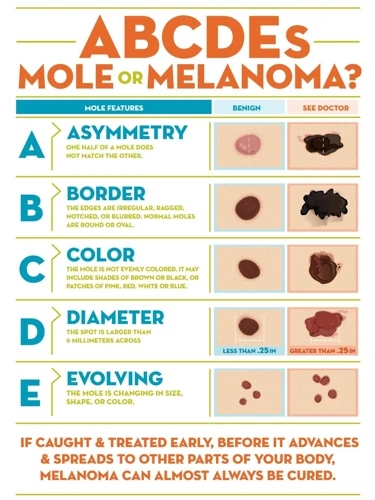
When it comes to understanding moles and effectively controlling them, it is essential to have knowledge about their physical appearance. Moles may seem like small, nondescript creatures, but they possess various unique characteristics. From their fur and skin to their size and senses, a mole’s physical appearance can reveal much about their behavior and habits. Understanding their physical traits can help you implement the right strategies to keep them under control. Let’s dive into the fascinating world of moles and learn more about their unique physical appearance. To gain a deeper understanding, it’s worth exploring the internal anatomy, teeth function, hearing abilities, unique fur significance, snout behavior, and tail importance of moles.
Fur and Skin
The fur and skin of moles play important roles in their survival and health. Here are the details:
| Fur | Moles have short, soft fur that is usually dark in color, such as black, gray, or brown. The fur is dense and velvety, which helps them move through tight spaces underground without getting caught or injured by roots or rocks. The fur also keeps them warm in their underground burrows during winter months, when they are less active. |
| Skin | Moles have sensitive and delicate skin that can easily get damaged by exposure to sunlight or dry air. That is why they rarely come out of their burrows during the day, except during rainy or cloudy weather. Their skin is also adapted to their digging lifestyle as it contains tough, leathery pads on their feet and a wrinkled, flexible snout that can move in any direction and sense vibrations and smells. |
In addition to their fur and skin, moles also have several other physical characteristics, such as their small size, unique bone structure, and specialized sensory organs, that make them efficient underground creatures. Understanding these traits can help in developing effective control strategies to manage mole infestations on your property.
Size and Weight
The size and weight of moles can vary depending on the species. Generally, moles are small animals with streamlined bodies that are perfect for burrowing.
| Species | Size | Weight |
|———|——|——–|
| Eastern Mole | 6-7 inches | 2.5-4 ounces |
| Star-nosed Mole | 6-7 inches | 1.5-2.5 ounces |
| Hairy-tailed Mole | 5-6 inches | 1.5-2 ounces |
| Coast Mole | 5-6 inches | 1-2 ounces |
Eastern moles are the largest species of mole, reaching up to 7 inches in length and weighing between 2.5-4 ounces. The smallest species is the hairy-tailed mole, which only grows up to 6 inches long and weighs about 1.5-2 ounces. Despite their small size, moles can dig tunnels that are much larger than their bodies, sometimes up to 100 feet long.
Moles have a stocky build with short legs and large front paws that are equipped with sharp claws for digging. Their fur is typically brown or gray and is thick and velvety, helping them to stay warm underground. Their physical characteristics make them well-suited to a life spent primarily underground.
Senses
Moles possess highly developed senses that they use to navigate their underground tunnel systems. They have poor eyesight and rely heavily on the other senses. Moles contain tiny and sensitive ears under their thick fur. They pick up on vibrations in the soil from insects and predators, including humans. Moles have unique, cone-shaped noses, which they use to smell food, predators, and mates.
Their touch or sense of touch is highly developed, which helps them navigate through their dark tunnel systems, avoid obstacles, and detect prey. Moles have tiny sensory hairs on their skin that are highly sensitive to changes in their environment. They use these sensitive whiskers to detect vibrations in the ground, such as a passing insect or a predator walking nearby.
In the table below, we summarize the senses of moles in more detail.
| Sense | Description |
| Eyesight | Very poor |
| Hearing | Highly sensitive and can pick up on vibrations in the soil |
| Smell | Highly developed sense of smell used to detect food, predators, and mates |
| Touch | Highly developed sense of touch used to navigate through dark tunnel systems, detect obstacles, and prey |
It is important to understand the senses of moles to effectively control their activity. Trapping and repellents should take into account the moles’ heightened senses, and preventive measures can also be employed to deter them from an area in the first place.
Diet and Reproduction
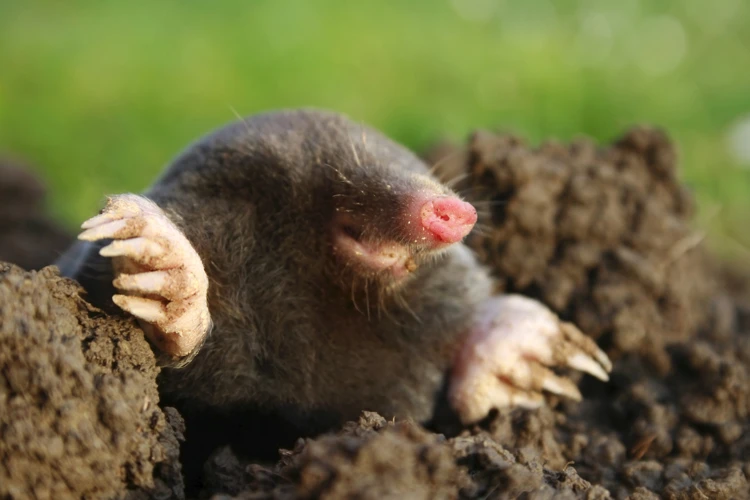
The eating habits and reproductive behavior of moles are fascinating subjects for study. Understanding these aspects of their lives can help in developing effective control methods. In this section, we’ll explore what moles eat and how they reproduce, shedding light on their unique characteristics and providing insights into their behavior.
Diet
Moles have a varied diet that mainly consists of insects, worms, and grubs. They are known for their ability to consume a large amount of food each day, with a single mole consuming up to half its body weight in food. Some of the main prey items for moles include earthworms, beetle larvae, ants, and other insects. Moles have also been known to eat small animals such as mice and shrews, although this is less common.
Moles are fossorial animals and spend most of their time underground. This means that their diet mainly consists of prey that is found within the soil. Moles use their strong front paws to construct underground tunnels, where they hunt their prey. When a mole senses prey nearby, it will dig through the soil to reach the target with remarkable speed and accuracy.
One interesting fact about moles is that they have a very high metabolic rate, which means that they need to consume large amounts of food to maintain their energy levels. Moles are also known for their voracious appetite, which can be a problem when they are living in residential areas.
Here are some of the main dietary preferences of moles:
- Earthworms: Moles will consume large numbers of earthworms, which are a rich source of protein and other important nutrients. Earthworms are found in the soil and are a common prey item for moles.
- Insects: Moles will eat a range of insects, including beetle larvae, ants, and other small insects. They use their keen sense of smell to locate prey, and then dig tunnels to reach them.
- Grubs and larvae: Moles are also known to eat grubs and other insect larvae that may be found in the soil. These are a good source of protein and other important nutrients.
- Small animals: Although less common, moles have been known to eat small animals such as mice and shrews. This is more likely to occur in areas where their primary prey is scarce.
Moles have a diverse diet that mainly consists of prey items found within the soil. Their ability to consume large amounts of food each day is driven by their high metabolic rate, which keeps them active and energetic even when living completely underground.
Reproduction
Moles reproduce once a year, typically in the spring. Their breeding season varies with geographical location and temperature. Moles are solitary creatures, and males will actively seek out females for mating. Here are some key points about mole reproduction:
- Mating: Male moles search for female moles by following their pheromone trails. The male will then mate with the female, and afterward, both will go their separate ways.
- Gestation: The gestation period for moles lasts around four to six weeks. The female mole then gives birth to a litter of up to six pups.
- Birthing and Weaning: Moles give birth to their young deep within their burrow systems. The young are born without fur and with closed eyes. They typically stay in the nest for about a month before they are weaned and begin to venture out of the den.
- Maturation: Moles reach maturity at about one year of age. At this point, they will begin to breed themselves and continue the cycle of reproduction.
It’s worth noting that mole populations can grow rapidly under certain circumstances, leading to increased mole activity and damage to lawns and gardens. It’s important for property owners to be aware of mole behavior and signs of mole activity so that they can take appropriate control measures if necessary.
Signs of Mole Activity
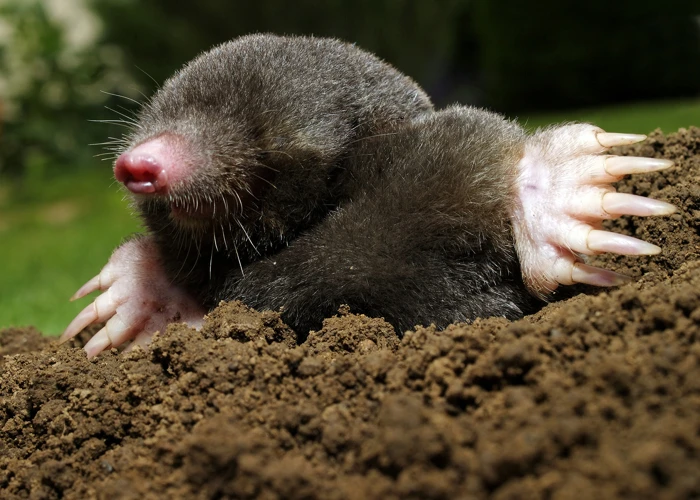
If you suspect that you have a mole infestation on your property, there are several signs you can look for to confirm their activity.
Molehills: One of the most obvious signs of a mole infestation is molehills. Molehills are conical piles of soil that are pushed up from the mole’s underground tunnels. These molehills can vary greatly in size, but typically range from 4-8 inches in diameter. You may notice these molehills scattered throughout your lawn or garden.
Mole tunnels: In addition to molehills, you may also notice the network of tunnels that moles create. These tunnels are located just below the surface of the soil and may be visible as raised ridges on your lawn or garden. Moles use these tunnels to travel around their territory and search for food.
Wilted plants: Moles are insectivores and feed primarily on earthworms and grubs. However, their burrowing activity can damage plant roots and cause wilting or death of your plants. This can be a sign of a mole infestation even if you haven’t seen any molehills or tunnels.
Surface runways: Moles can create shallow surface runways as they search for food. These runways can be seen as raised ridges on your lawn or garden and may be a sign of mole activity.
Unusual animal behavior: Moles are active primarily at night, so you may not see them in action. However, if you see unusual animal behavior such as cats or dogs digging frantically in one area, it could be a sign that there are moles present in your yard.
If you notice any of these signs, it is important to take action to control the mole population on your property. There are a variety of methods available for controlling moles, including trapping, repellents, and preventative measures.
Methods for Moles Control
When it comes to dealing with moles, prevention is always the best approach. However, if you already have an infestation, taking action to control their activity is crucial to prevent damage to your yard or garden. There are various methods for moles control that you can try, including preventive measures, trapping, and repellents. Keep in mind that each method has its own advantages and disadvantages, and what works for one person may not work for another. In this section, we will take a closer look at each of these methods, so you can make an informed decision on which one to choose.
Preventive Measures
Effective mole control requires a combination of preventive measures and targeted methods. The following preventive measures can help reduce the attraction of moles to your property and prevent them from causing damage.
| Preventive Measure | Description |
|---|---|
| Bury wire mesh fencing | Install a wire mesh fence around your property to discourage moles from burrowing into your yard. Bury the fence at least 2 feet deep to prevent moles from digging underneath it. |
| Keep the lawn short | Regularly mow your lawn to keep it short, as moles prefer tall grass and weeds. Short grass also makes it easier to spot mole activity. |
| Remove grubs and insects | Since moles feed primarily on grubs and insects, reducing their population can make your yard less attractive to moles. Use insecticides and grub control products to get rid of these pests. |
| Eliminate standing water | Moles need water to survive, and standing water can attract them to your yard. Repair any leaks and remove any standing water to reduce the likelihood of mole activity. |
| Use raised beds | Consider using raised beds to grow your plants rather than planting them directly in the ground. This can make it more difficult for moles to access your plant roots. |
| Keep the soil loose | Loose soil is more difficult for moles to tunnel through, so adding sand or perlite to the soil can make it less attractive to moles. |
By implementing these preventive measures, you can reduce the likelihood of mole activity on your property and minimize any damage they may cause.
Trapping
Trapping is one of the most effective and humane methods for controlling mole populations. There are several types of mole traps available, but it’s important to choose the right trap for the situation.
Types of mole traps:
| Trap Type | Description |
|---|---|
| Scissor-Jaw | A trap that uses spring-loaded scissor-like jaws to quickly kill the mole. |
| Harpoon | A trap that uses a spear-like harpoon to impale and kill the mole. |
| Choker Loop | A trap that uses a loop of wire to quickly strangle the mole. |
Once you have chosen the right trap, it’s important to properly set it in the mole’s active tunnel. Look for signs of mole activity, such as raised ridges or mounds of soil, and dig a hole to expose the tunnel. Place the trap in the tunnel with the trigger pan facing up and cover the hole with a board or sod to block out light and create a dark environment that moles prefer.
Check traps daily, preferably in the morning or evening when moles are most active. If a mole is caught, follow proper disposal procedures according to local regulations.
It’s important to note that trapping may not be effective for all situations and may require patience and persistence to achieve desired results. It’s important to take preventative measures to discourage new moles from moving into the area.
Repellents
When it comes to repelling moles, there are a variety of options available. Some options may work better than others depending on the specific situation.
Castor Oil: Castor oil is one such option. It is frequently used as a natural repellent for moles. The idea is that the castor oil scent and taste are both unpleasant for moles, and they will avoid areas treated with castor oil.
Garlic: Garlic is another natural ingredient that can deter moles. Simply crush garlic cloves and place them around the garden or lawn where you want to keep moles away. The strong scent of garlic will drive moles away.
Ultrasonic Repellents: Another option is an ultrasonic repellent. These devices emit high-frequency sounds that moles find unpleasant. While some people swear by these devices, there is limited scientific evidence as to their effectiveness.
Fencing: Fencing is a more labor-intensive option but can be effective. Moles can’t climb or jump, so a properly installed fence can help keep them out of an area. However, fencing needs to be installed quite deep to prevent moles from burrowing under it.
Chemical Repellents: Chemical repellents are another option. These products are typically sprayed onto lawns and gardens to repel moles. However, they can be harmful to other beneficial wildlife and should be used with caution.
| Repellent | Pros | Cons |
|---|---|---|
| Castor oil | Natural, safe for pets and beneficial wildlife | May take time to take effect, needs to be reapplied |
| Garlic | Natural, safe for pets and beneficial wildlife | May need to be reapplied frequently, strong odor |
| Ultrasonic Repellents | Non-toxic, silent, and easy to use | Limited scientific evidence as to effectiveness, can be expensive |
| Fencing | Long-lasting, no harm to other wildlife | Labor-intensive, can be costly, may need to be installed deep |
| Chemical Repellents | Easy to apply | Can harm beneficial wildlife, toxic to pets, may need frequent reapplication |
Before choosing a repellent, it’s important to keep in mind that no method is guaranteed to be 100% effective. A combination of preventive measures and trapping may be necessary for a successful mole control plan. Additionally, it’s important to carefully follow any instructions provided with the repellent to ensure safe and effective use.
Conclusion
After learning about the physical characteristics and behavior of moles, as well as their habitat, diet, and reproduction, it is clear that effective mole control requires a comprehensive approach.
Preventive measures such as removing their food sources and installing barriers can help deter moles from entering the area in the first place. However, if moles have already established themselves in the area, trapping may be necessary to effectively reduce their numbers.
It is important to use the correct type of trap and place it in an area where mole activity has been observed. Additionally, repellents made from natural ingredients or technology such as sound waves can also be effective in keeping moles away.
It should be noted that moles play an important role in the ecosystem by aerating soil and controlling insect populations. Therefore, it is important to consider the impact of mole control methods on the environment.
Overall, understanding the behavior and physical characteristics of moles is crucial for effective and humane mole control. By implementing a multifaceted approach and considering the ecological impact of control methods, homeowners and pest control professionals can successfully manage mole populations.
Frequently Asked Questions
What are moles?
Moles are small mammals that live underground and are known for their ability to create tunnels and mounds in lawns and gardens.
Why are moles considered pests?
They are considered pests because their tunnels and mounds can damage lawns and gardens, and their diet consists of insects and earthworms which can harm the roots of plants.
How can I identify the presence of moles in my lawn or garden?
You can identify the presence of moles by the raised tunnels and mounds that they create in your lawn or garden.
What is the behavior of moles?
Moles are solitary animals and are most active during the day. They spend most of their time underground and can dig up to 100 feet of tunnels a day.
Where do moles live?
Moles live in a variety of habitats, including grasslands, forests, and gardens. They prefer to live in areas with loose, moist soil that is rich in earthworms and other insects.
How big are moles?
On average, moles are around 6 inches long and weigh between 2-4 ounces.
What is the diet of moles?
Moles primarily eat insects and earthworms, but they may also eat small rodents and other small animals.
How often do moles reproduce?
Moles typically have one litter per year, with an average litter size of 3-5 babies.
What are some effective methods for mole control?
Effective methods for mole control include preventive measures, such as reducing the amount of water in your lawn or garden, trapping, and using repellents.
How can I tell if my mole control methods are working?
You can tell if your mole control methods are working by monitoring the level of activity in your lawn or garden. If you see a reduction in mole activity, your methods are likely working.

